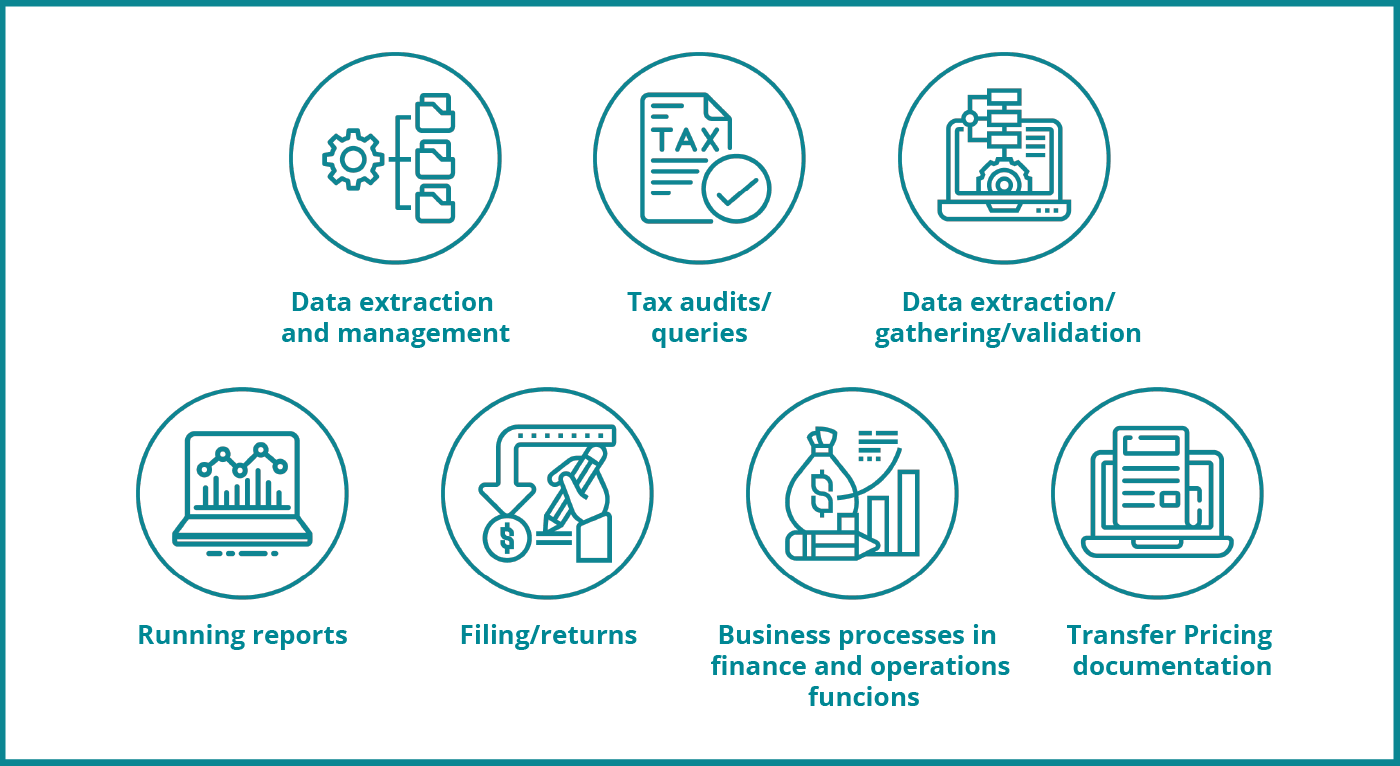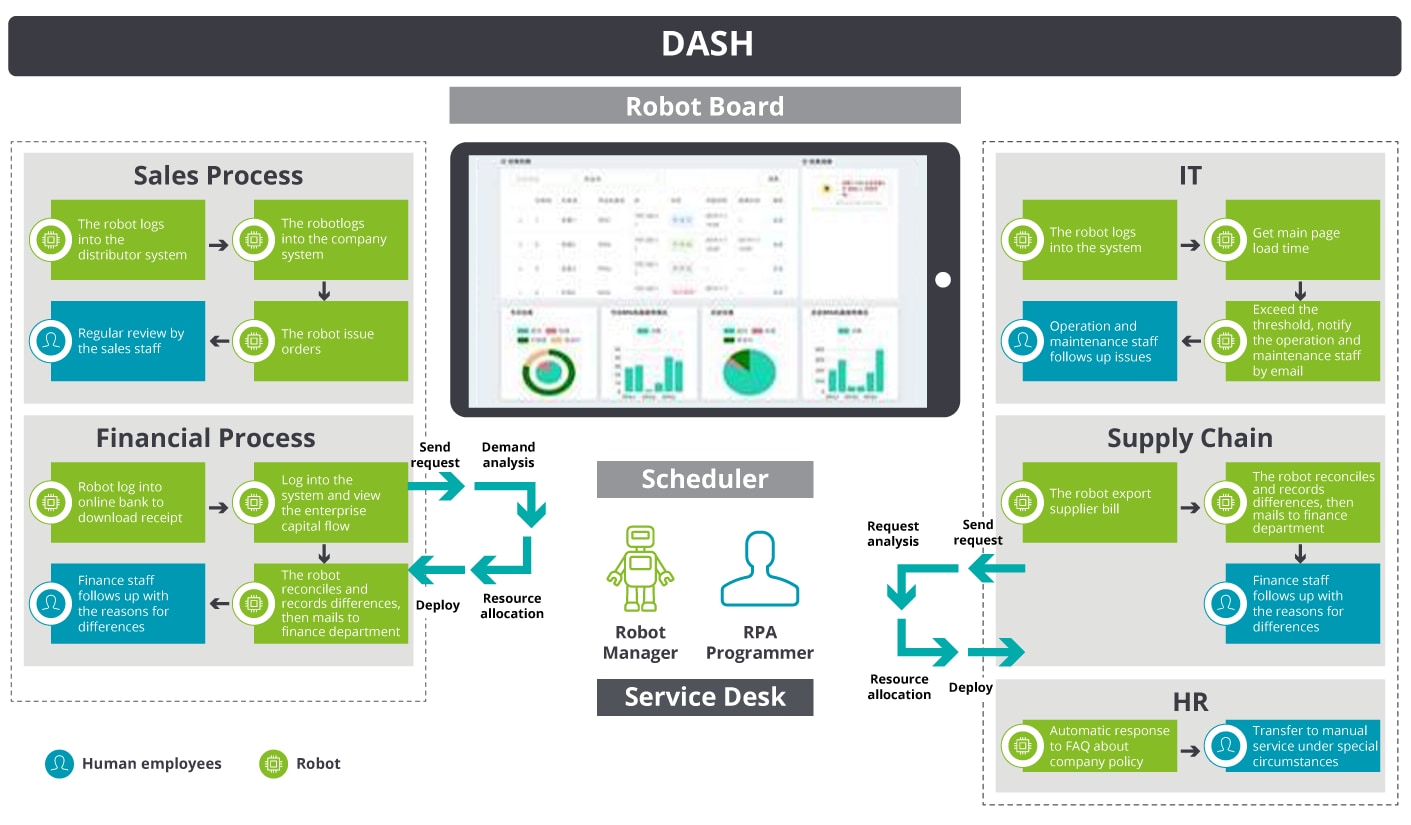Article

Reimagine the future tax function with cloud-based robots
Connect to tomorrow
Robots as a Service (RaaS) offers a rapid and efficient way to deliver the capabilities of Robotic Process Automation (RPA). You can enjoy the benefits of RPA by leasing robotic devices and accessing a cloud-based subscription service without the need to purchase licenses or change your underlying system and technology. Quick to implement, RaaS can allow business leaders to accelerate plans around digital transformation as it is flexible and customizable to suit the needs of an organization, and it involves less long-term commitment (hosting and technical requirements) and upfront operating costs.
With tax leaders now challenged to operate departments virtually; the COVID-19 pandemic has triggered mass adoption of new technologies and sped up the transformation of operations and business models.
Business leaders increasingly recognize that these new technologies and capabilities, including RPA, can offer better, faster, and cheaper ways of doing manual tasks. Many forward looking organizations are already using RaaS as a transformation catalyst, with some setting up RPA Centers of Excellence (CoE) that are dedicated to training and developing resources to implement leading RPA solutions to solve their biggest business challenges.
As businesses anticipate a post-pandemic world, not only is agility the key to survival in the face of disruption but innovating processes and implementing new digital capabilities is now a prerequisite.
Robots can be used to perform the following tax tasks:

How it works: Robots in action
If you consider that tax is typically a substantial consumer of enterprise data, then leveraging robotics to transform core business areas and automating processes will help to manage cost. Done right, the shift to intelligent automation should save money, reduce complexity and accelerate the digital experience.
Capability with efficiency
Robot as a Service (RaaS) can be used to accelerate invoice processing by handling the rote aspects of invoice management efficiently and accurately. See how one green energy company used automation to transform finance work, improve the quality and reliability of its data and maintain productivity to counter workforce disruption caused by the pandemic.

Accuracy with speed
Repetitive tasks can be made easier through cloud robotics. Amid the uncertainty, robots can help you operate your business more efficiently, increase output quality and reduce manual effort. Use automation to improve the customer experience, and processes. In this example Deloitte robots helped an aviation company automate and process COVID-19 related ticket cancelations.

Humans paired with machines
To help enterprises increase efficiency and productivity, Deloitte China developed an AI-enabled cloud robot, “Deloitte Automation Service Hub” (DASH)
In this example, using the DASH platform, a tax manager can reduce the processing time spent on non-value adding activities by sending numerous VAT filings to a designated mailbox where DASH will automatically retrieve information from the mailbox, complete the filing and then auto-email back the results to the tax manager.
This process can be managed in-house by acquiring the bots directly or by using the RaaS model of DASH. The RaaS approach can be an effective way to accelerate digital transformation as it lowers the risks of adoption and reduces costs and entry barriers and because work is performed on demand enterprises only pay for what they use. Its non-invasive as it can work across many IT systems providing scalability and flexibility, and reducing the need for high-end hardware and software configuration, and can solve the challenge of robot task scheduling within existing infrastructure.
The service can be easily managed from a central point that interacts with a wide range of business applications. With robotic automation you can evolve the operating model, reuse components and leverage bot capacity to maximize cost efficiencies and redesign business processes and workflows. You can also use bot insights to drive process efficiencies.
* Click on image to zoom in

The COVID-19 crisis has made it very clear those organizations foresighted enough to have cloud technology and intelligent automation have been able to pivot toward recovery. With so much in flux, the pandemic is also proving to be an important catalyst for change. It has dislodged longstanding inertia about how, where, and when work gets done.
Now is the time to start contemplating intelligent automation to create a resilient tax model and build a sustainable organization over the long-term. The shift to cloud-based robots can provide a clear path toward becoming digitized, and a strategic adviser that the business expects but an all-encompassing approach is needed – those that will see the greatest benefits from automation will have engaged in entity-wide transformations, rooted in forward-looking, human-centric strategies.
